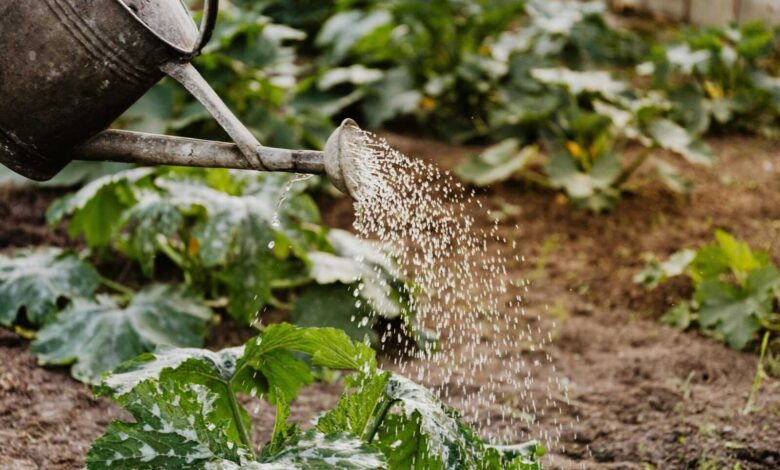Composting 101: Turn Kitchen Scraps into Rich Soil for Your Garden

Introduction to Composting
Welcome to the ultimate guide on composting! Discover how to turn kitchen scraps into nutrient-rich soil for your garden. Whether you’re a beginner or seasoned gardener, learn the essentials of composting and how it benefits your plants and the environment.
Composting is an eco-friendly practice that transforms organic waste into nutrient-rich soil, enhancing garden health while reducing landfill waste. This process not only supports sustainable gardening but also contributes significantly to environmental conservation.
What is Composting?
Composting is the natural breakdown of organic matter by microorganisms, fungi, and bacteria into humus, a rich, dark soil. This process mimics nature’s cycle of decomposition, turning kitchen scraps, yard waste, and other organic materials into valuable compost. This compost improves soil structure, increases fertility, and boosts plant health.
Key Points:
- Microbial Breakdown: Microorganisms break down organic materials, turning them into compost.
- Nutrient Recycling: Composting returns vital nutrients to the soil, enhancing its fertility.
- Environmentally Friendly: Reduces waste in landfills, cutting down methane emissions.
Resources:
Benefits of Composting
Composting offers numerous benefits, making it an indispensable practice for gardeners and environmentally conscious individuals:
- Improves Soil Structure: Compost enhances soil texture, promoting better water retention and drainage.
- Boosts Plant Growth: Provides essential nutrients, supporting vigorous plant growth and higher yields.
- Reduces Greenhouse Gases: Diverts organic waste from landfills, significantly reducing methane emissions.
- Conserves Water: Enhances soil’s water-holding capacity, reducing the need for frequent watering.
- Reduces Waste: Diverts organic waste from landfills, helping to manage waste more sustainably.
Resources:
- Rodale Institute – Benefits of Composting
Why Compost at Home?
Home composting empowers gardeners to recycle organic waste into a valuable resource. It’s simple, cost-effective, and a crucial step towards sustainable living. Home composting is accessible, whether you have a small balcony or a large backyard.
Key Benefits:
- Saves Money: Reduces the need for commercial fertilizers and soil conditioners.
- Enhances Soil Health: Promotes beneficial soil organisms, enhancing soil structure and health.
- Reduces Carbon Footprint: Minimizes waste sent to landfills, cutting greenhouse gas emissions.
Resources:
- Gardeners’ World – Composting at Home
Getting Started with Composting
Choosing a Composting Method
Selecting the right composting method is crucial for success. Your choice will depend on space, volume of waste, and desired composting speed.
- Traditional Compost Piles: Ideal for larger spaces, these piles are simple to manage. Turn them regularly to aerate and speed up decomposition.
- Compost Bins: Suitable for small spaces, these bins contain the compost and control moisture and temperature. Options range from basic wooden bins to advanced tumblers.
- Vermicomposting (Worm Composting): Best for small spaces, vermicomposting uses worms to break down organic matter, producing rich worm castings.
Resources:
- Mother Earth News – Types of Composting Methods
- University of Illinois Extension – Composting Methods
Essential Tools and Materials
Before starting, gather the necessary tools and materials:
- Compost Bin or Pile: Choose one that suits your space. Options include plastic bins, wooden boxes, or simple piles.
- Brown Materials (Carbon-rich): Include dry leaves, straw, shredded paper, cardboard, and sawdust. These materials provide carbon, essential for balancing nitrogen-rich green materials.
- Green Materials (Nitrogen-rich): Use fruit and vegetable scraps, coffee grounds, tea leaves, eggshells, grass clippings, and plant trimmings. These provide nitrogen, essential for microbial activity.
- Water: Maintain moisture levels, aiming for a consistency similar to a damp sponge.
Resources:
- Planet Natural – Composting Essentials
- University of California Agriculture and Natural Resources – Composting Guide
Setting Up Your Compost System
Follow these steps to establish a functional compost system:
- Location: Choose a well-drained, sunny spot with good air circulation. This promotes effective decomposition and prevents odors.
- Layering Materials: Start with a layer of coarse materials like small branches or straw at the bottom. Alternate layers of green and brown materials, aiming for a balanced mix.
- Moisture and Aeration: Keep the pile moist but not soaking wet. Turn the compost regularly to introduce oxygen, promoting aerobic decomposition.
Resources:
- The Old Farmer’s Almanac – Starting a Compost Pile
Composting Do’s and Don’ts
What to Compost
You can compost many organic materials, contributing to a healthy compost pile:
- Fruit and Vegetable Scraps: Include peels, cores, rinds, and spoiled produce.
- Coffee Grounds and Tea Bags: These are rich in nitrogen and decompose quickly.
- Eggshells: Crush them to add calcium and balance the compost’s pH.
- Yard Waste: Grass clippings, leaves, small prunings, and plant trimmings are perfect additions.
Resources:
- Rodale Institute – Composting Materials List
- University of Minnesota Extension – Compost Materials
What NOT to Compost
Avoid materials that can disrupt the composting process or attract pests:
- Meat, Dairy, and Oils: These can attract pests and create unpleasant odors.
- Pet Waste: Contains pathogens that can be harmful to humans and plants.
- Synthetic Materials: Avoid composting items like plastic, glass, or metal.
Resources:
Troubleshooting Common Issues
Address common problems to maintain a healthy compost pile:
- Odor: Foul smells indicate insufficient aeration or an imbalance of materials. Turn the pile more frequently and add more brown materials.
- Pests: Bury food scraps under a layer of brown materials and avoid meat, dairy, or oily foods to deter pests.
- Slow Decomposition: Ensure a balanced mix of green and brown materials and maintain proper moisture levels.
Resources:
Maintaining Your Compost
Turning and Aerating
Regularly turning the compost pile enhances decomposition and prevents odors:
- Frequency: Turn the pile every 1-2 weeks, using a pitchfork or compost aerator. This introduces oxygen and helps break down materials.
- Aeration Tips: Regular turning prevents anaerobic conditions, which can produce unpleasant smells.
Resources:
Monitoring Moisture Levels
Maintaining optimal moisture levels is crucial for effective composting:
- Moisture Check: Squeeze a handful of compost; it should feel like a damp sponge.
- Adjusting Moisture: Add water if the pile is too dry or more brown materials if it’s too wet.
Resources:
Harvesting Your Compost
Recognize when your compost is ready and learn how to harvest it:
- Indicators of Readiness: Finished compost is dark, crumbly, and earthy-smelling. It should no longer resemble the original materials.
- Harvesting Process: Use a garden fork or sifter to separate finished compost from unfinished materials. Store or use it immediately in your garden.
Resources:
- Oregon State University Extension Service – Compost Harvesting
Using Compost in Your Garden
Soil Amendment Benefits
Incorporating compost into your garden soil offers numerous advantages:
- Soil Structure: Improves aeration, drainage, and water retention.
- Nutrient Boost: Adds essential nutrients, reducing the need for synthetic fertilizers.
- Microbial Health: Enhances beneficial soil organisms, promoting plant health and resilience.
Resources:
- PennState Extension – Using Compost in Gardens
Application Methods
Apply compost to your garden in various ways to maximize its benefits:
- Topdressing: Spread a layer on the soil surface to enrich it and retain moisture.
- Incorporation: Mix compost into the soil before planting to enhance fertility and structure.
- Mulching: Use compost as mulch around plants to suppress weeds and regulate soil temperature.
Resources:
- Gardening Know How – Benefits of Using Compost in Your Garden
Container Gardening with Compost
Utilize compost in container gardening for healthier, more productive plants:
- Potting Mix: Blend compost with potting soil for nutrient-rich growing medium.
- Water Retention: Improves moisture retention in containers, reducing watering frequency.
- Plant Nutrition: Provides essential nutrients for robust growth and flowering in potted plants.
Resources:
Composting is a sustainable practice that enriches soil health, reduces waste, and supports vibrant plant growth. By following these guidelines and utilizing the recommended resources, you can successfully transform kitchen scraps and yard waste into valuable compost for your garden. Start composting today to reap the benefits of healthier soil, stronger plants, and a greener environment.
Congratulations on embarking on your composting journey! By following these tips, you’re not only enriching your garden but also contributing to a healthier environment. Start composting today and reap the rewards of sustainable gardening.
FAQ Section
1. What materials can I compost?
You can compost fruit and vegetable scraps, coffee grounds, tea bags, eggshells, yard waste like leaves and grass clippings, and more. Avoid meat, dairy, and oily foods.
2. How do I start composting at home?
Start with a compost bin or pile in a sunny spot. Layer green (nitrogen-rich) and brown (carbon-rich) materials, keep it moist, and turn it regularly for proper aeration.
3. How long does it take to make compost?
Composting can take anywhere from a few weeks to several months, depending on factors like temperature, moisture, and the mix of materials.
4. What should I do if my compost smells bad?
Aerate the pile by turning it more frequently and ensure a balanced mix of green and brown materials. Avoid over-watering.
5. Can I compost in an apartment or small space?
Yes, consider vermicomposting with worms or use a small compost bin. Both methods work well in confined spaces.
6. How do I know when my compost is ready to use?
Finished compost is dark, crumbly, and earthy-smelling. It should no longer resemble the original materials you started with.
7. What are the benefits of using compost in gardening?
Compost improves soil structure, adds essential nutrients, enhances water retention, and promotes healthy plant growth without synthetic chemicals.
8. How can I use compost in container gardening?
Mix compost with potting soil for nutrient-rich growth medium, use it as topdressing, or incorporate it when planting to enrich the soil.
9. What should I not put in my compost pile?
Avoid adding meat, dairy, oils, and pet waste. These can attract pests and pathogens that are harmful to plants and humans.
10. How do I troubleshoot common composting problems?
Address issues like odor, slow decomposition, or pests by adjusting the compost mix, turning it more frequently, and maintaining proper moisture levels.




